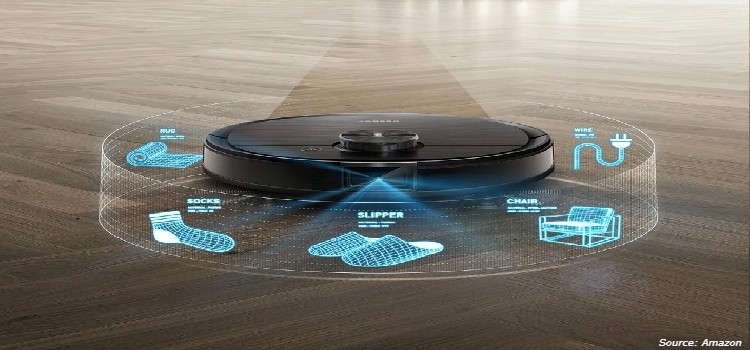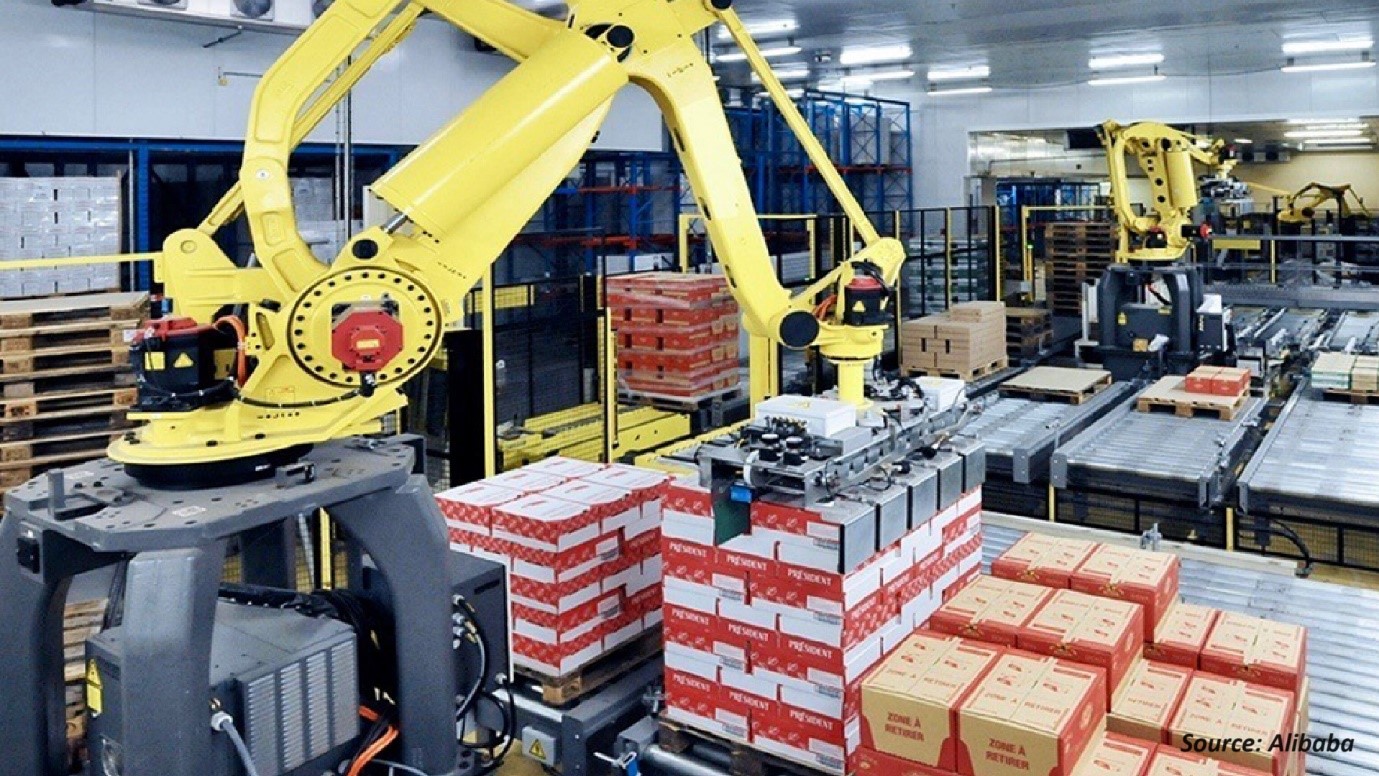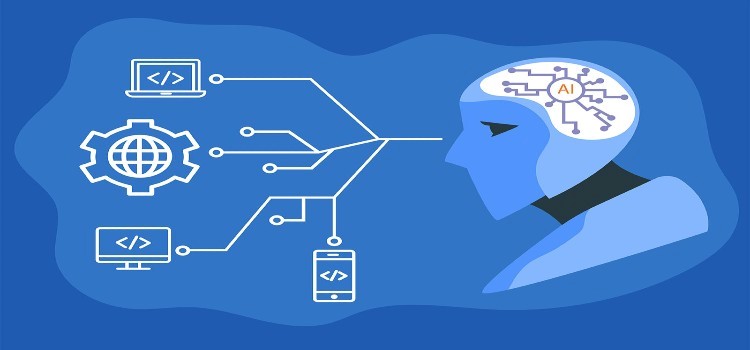
Germany Robot Software Market by Software Type (Recognition Software, Simulation Software, Predictive Maintenance Software, Communication Management Software, and Data Management and Analysis Software), by Robot Type (Service Robots and Industrial Robots), by Deployment Mode (On-premise and On-demand), by Organization Size (Large Enterprises and Small and Medium-sized Enterprises (SMEs)), and by Industry Vertical (Banking, Financial Services, and Insurance (BFSI), Automotive, Retail and E-Commerce, Aerospace & Defense, Healthcare and Life Sciences, Transportation and Logistics, Manufacturing, Telecommunications and IT, Academia and Research, Media & Entertainment, and Others) – Opportunity Analysis and Industry Forecast, 2024–2030
Industry: ICT & Media | Publish Date: 09-Jul-2024 | No of Pages: 126 | No. of Tables: 92 | No. of Figures: 57 | Format: PDF | Report Code : N/A
Germany Robot Software Market Overview
The Germany Robot Software Market size was valued at USD 424.3 million in 2023, and is expected to reach USD 1799.8 million by 2030, with a CAGR of 21.9% from 2024 to 2030. Robot software constitutes a suite of programs and algorithms crafted to supervise and govern the operations of robots or robotic systems in diverse industries such as logistics, manufacturing, entertainment, healthcare, and more. Its functionality encompasses several pivotal components. Firstly, it coordinates and manages the movements and behaviors of robots, ensuring precise and efficient task execution by issuing detailed commands to robotic components such as motors and actuators.
Furthermore, robot software plays a critical role in interpreting data from various sensors embedded within robots, including cameras, Light Detection and Ranging (LIDAR) sensors, and tactile sensors. This data interpretation provides crucial environmental feedback that enables robots to accurately perceive and understand their surroundings. An essential aspect of robot software is its ability to make intelligent decisions utilizing artificial intelligence (AI) and machine learning (ML) algorithms. Through the analysis of data from sensors, adherence to predefined rules, or learning from past experiences, robots can adapt to changing conditions, allowing them to operate autonomously and adjust their actions in real-time.
Additionally, robot software facilitates communication and networking among robots, enabling collaboration for complex tasks or data exchange with a central control system. This interconnectedness facilitates synchronized operations in industrial environments, leading to enhanced efficiency and productivity.
Increasing Investments in Research and Development (R&D) Drive the Germany Robot Software Market Growth
Increasing investments in research and development (R&D) are pivotal in driving the growth of the Germany robot software market. As organizations and governments allocate more resources to R&D initiatives, there is a heightened focus on advancing robotics and automation technologies, including robot software. These investments serve as catalysts for innovation, leading to the development of more sophisticated and capable robot software solutions. R&D efforts significantly contribute to enhancing functionalities such as AI integration, machine learning algorithms, and advanced control systems, enabling robots to perform complex tasks with greater efficiency and autonomy.
Moreover, R&D investments fuel the exploration of new applications and use cases for robot software across diverse industries, expanding the market's potential. By fostering technological advancements and addressing emerging challenges, increased R&D investments stimulate market growth and drive the evolution of the robot software market.
Increasing Adoption of Industrial Robots Propels the Growth of the Germany Robot Software Market Trends
The escalating adoption of industrial robots serves as a significant catalyst propelling the growth of the Germany robot software market demand. As industries across various sectors increasingly embrace automation in their operations, there is a parallel increase in demand for efficient robot software solutions. Industrial robots are being deployed across a wide spectrum of tasks, from manufacturing and assembly to logistics and warehousing.
To fully exploit the capabilities of these robots and seamlessly integrate them into existing workflows, sophisticated software solutions are indispensable. These software platforms facilitate programming, control, optimization, and coordination of robotic systems, thereby enhancing their performance and productivity. Consequently, the rising adoption of industrial robots fuels the demand for advanced robot software, driving growth in the Germany robot software market.
Cybersecurity and Data Protection Concerns Associated with Robot Software Restrain the Growth of the Germany Robot Software Market
Cybersecurity and data protection concerns related to robot software represent significant hurdles to the Germany robot software market growth. As robots become increasingly interconnected within digital ecosystems, they are exposed to various cyber threats, including unauthorized access, data breaches, and malware attacks. Insufficient cybersecurity measures within robot software can compromise sensitive data, intellectual property, and operational integrity, potentially resulting in financial losses and reputational damage for organizations.
Moreover, with the proliferation of IoT-enabled robots and the accumulation of vast amounts of data, there is an elevated risk of data privacy violations and regulatory non-compliance. Consequently, organizations are cautious about adopting robot software solutions lacking robust cybersecurity features and data protection mechanisms, which restrains the Germany robot software market growth. Addressing these concerns through enhanced cybersecurity measures, encryption protocols, and compliance frameworks is essential to build trust and drive wider adoption of robot software across diverse industries.
The Expansion of Robotics-as-a-Service Creates New Opportunities in the Germany Robot Software Market
The proliferation of Robotics-as-a-Service (RaaS) brings new opportunities in the market by offering a more accessible and cost-effective approach for organizations to deploy robotics solutions in the country. RaaS models enable businesses to access robotic hardware, software, and related services through subscription plans, eliminating the need for significant upfront investments in capital-intensive assets. This approach reduces barriers to entry, particularly for small and medium-sized enterprises (SMEs) or entities with limited budgets, allowing them to utilize robotics technology without the financial burdens of ownership.
Additionally, RaaS models often include maintenance, support, and software updates as part of the subscription, providing added value and simplifying the deployment process. By democratizing access to robotics technology and fostering a pay-as-you-go model, the expansion of RaaS creates new market opportunities, driving adoption across various industries and catalyzing innovation in robot software solutions.
Competitive Landscape
Several key players operating in the Germany robot software industry include IBM, NVIDIA, ABB Ltd., FANUC, Teradyne, Inc., H2O.ai, Brain Corp, CloudMinds, Clearpath Robotics, and Neurala, Inc. These market players are adopting strategies to maintain their dominance in the market.
Germany Robot Software Market Key Segments
By Software Type
-
Recognition Software
-
Simulation Software
-
Predictive Maintenance Software
-
Communication Management Software
-
Data Management and Analysis Software
By Robot Type
-
Service Robots
-
Ground
-
Aerial
-
Underwater
-
-
Industrial Robots
-
Traditional Industrial Robots
-
Articulated Robots
-
SCARA Robots
-
Parallel Robots
-
Cartesian Robots
-
Other Robots
-
-
Collaborative Industrial Robots
-
By Deployment Mode
-
On-premise
-
On-demand
By Organization Size
-
Large Enterprises
-
Small and Medium-sized Enterprises (SMEs)
By Industry Vertical
-
Banking, Financial Services, and Insurance (BFSI)
-
Automotive
-
Retail and eCommerce
-
Aerospace & Defense
-
Healthcare and Life Sciences
-
Transportation and Logistics
-
Manufacturing
-
Telecommunications and IT
-
Academia and Research
-
Media & Entertainment
-
Others
REPORT SCOPE AND SEGMENTATION:
|
Parameters |
Details |
|
Market Size in 2023 |
USD 424.3 Million |
|
Revenue Forecast in 2030 |
USD 1799.8 Million |
|
Growth Rate |
CAGR of 21.9% from 2024 to 2030 |
|
Analysis Period |
2023–2030 |
|
Base Year Considered |
2023 |
|
Forecast Period |
2024–2030 |
|
Market Size Estimation |
Million (USD) |
|
Growth Factors |
|
|
Companies Profiled |
10 |
|
Market Share |
Available for 10 companies |
|
Customization Scope |
Free customization (equivalent up to 80 working hours of analysts) after purchase. Addition or alteration to country, regional, and segment scope. |
|
Pricing and Purchase Options |
Avail customized purchase options to meet your exact research needs. |
KEY PLAYERS
-
IBM
-
NVIDIA
-
ABB Ltd.
-
FANUC
-
Teradyne, Inc.
-
H2O.ai
-
Brain Corp
-
CloudMinds
-
Clearpath Robotics
-
Neurala, Inc




 Speak to Our Analyst
Speak to Our Analyst


































